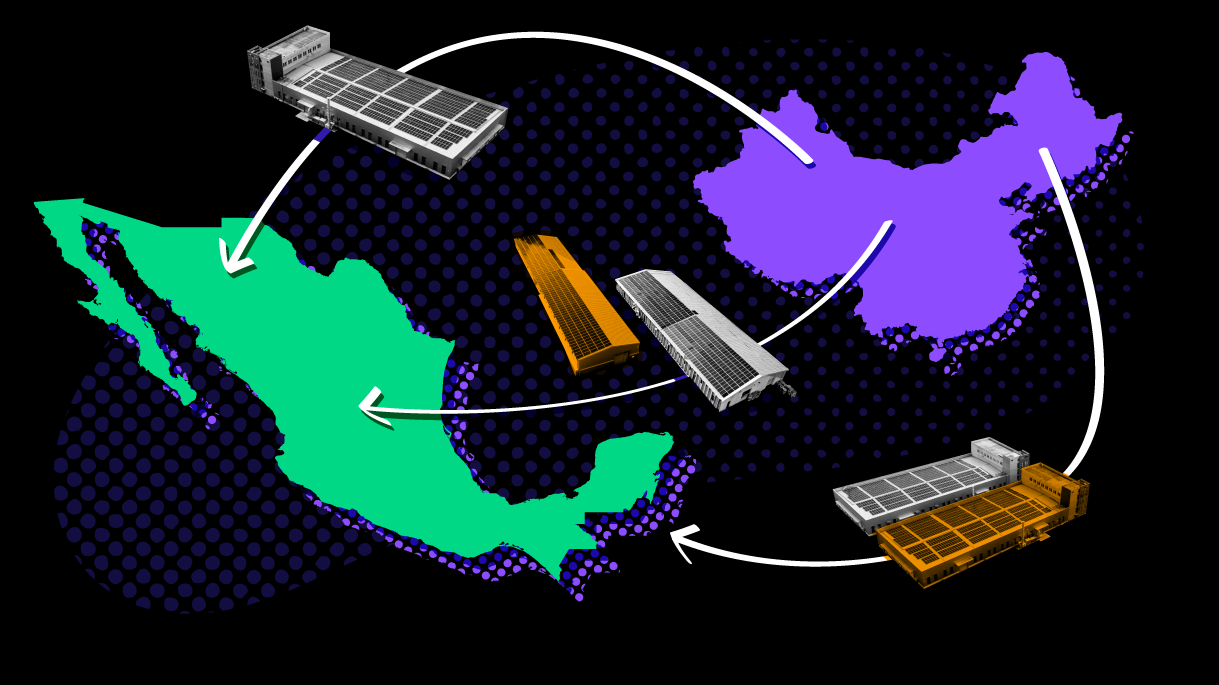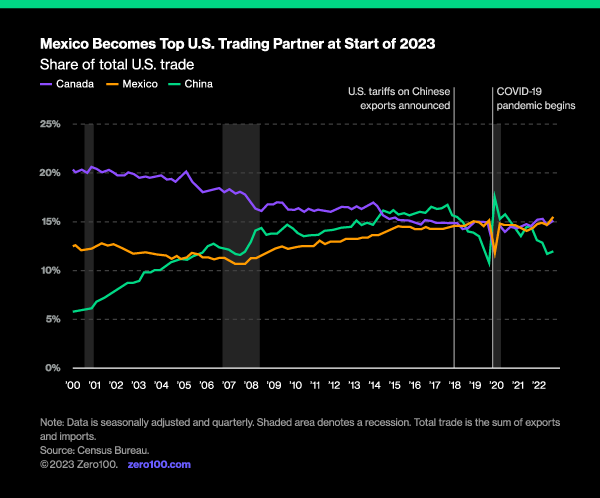
Mexico, North America, and Regional Supply Chains for the Future
The forces behind Mexico’s rise as a manufacturing and trading partner to the US go way beyond low-cost country sourcing. Global companies, including Apple, Nike, and Mazda, are moving away from geographically concentrated production in a story of North American supply chain regionalization likely to play out around the world.
In 2008, AMR Research (now part of Gartner) hosted a supply chain conference under the banner “Globalization Comes Home,” featuring former Mexican President Vicente Fox as the keynote speaker. The idea was to explore how global manufacturing and sourcing networks started to look outside of China for lower-risk supply chain strategies. The concern was not trade wars or COVID but rising labor costs, weak IP protections, and long lead times between order and delivery. In 2023, we are finally seeing the result – Mexico is now the top trading partner for the United States.
It's taken fifteen years and plenty of political posturing, but the fall of globalization to a more rational and sustainable model of regional supply chains is now a reality. For supply chain executives, the question is whether you’re moving fast enough in this direction.
No Turning Back
China’s rise as factory to the world may have started with lower labor costs, but that was only part of the story. Just as important was an unbeatable can-do attitude in China in the early 2000s when big global companies set up production operations super quickly, scaling faster than had ever been seen before. Later, in the 2010s, China’s edge was more a result of unique technical capabilities and highly evolved local supply networks. The pros (cost, scale, and capability) were still outweighing the gradually rising cons (IP infringement, higher risks, geopolitical rivalry).

The story of China vs Mexico as supply chain best-buddy to the US is not just a matter of manufacturing competitiveness. Equally important these days is the durability of the partnership in times of tension. China’s surging ambitions include aggressive sponsorship of the BRICS challenge to US dollar dominance and unapologetic industry policies aimed at dominating sectors like semiconductors and renewable energy technology. Coupled with Cold War-like moves to counter Western condemnation of Russia’s Ukraine invasion and a standing threat to retake Taiwan, China has signaled that it’s okay with a breakup.
For supply chains serving the US, this means that no matter how complicated it is to reduce dependency on China, and despite problems with Mexican crime, governance, and northward migration, smart money is moving to North America. This makes sense considering the natural logistical advantage of proximity, which sustains a symbiotic relationship between the US, Mexico, and Canada.
One proof point from the Council on Foreign Relations’ Shannon O'Neil in her book, The Globalization Myth: Why Regions Matter, is that finished goods imported from Mexico to the US are about 40% assembled from components made in the US. For Canadian imports, the figure is 25%, but for those imported from China, it is only about 4%. The politics around this issue include not only job creation but also strategic independence from a perceived foe.
North America sees an advantage in economic integration that matches its geographic footprint. With climate change forcing supply chain leaders to find ways to cut carbon, one obvious move is cutting the total distance traveled from raw material to customer. In addition, immigration challenges faced by border states and northern sanctuary cities could be at least partially addressed with more economic opportunity (and policing) in Mexico.
The forces behind Mexico’s rise as a manufacturing and trading partner to the US go way beyond low-cost country sourcing. If anything, these forces will probably grow.
Regionalize Now
The story of North American supply chain regionalization is likely to play out all around the world, and mostly for the same reasons as mentioned above. Global companies, including Apple, Nike, and Mazda, are moving away from geographically concentrated production and forward-thinking governments are trying to lure their investment, as the US has done with its IRA and CHIPS Act.
All of this raises the question of where China will go next. Its aging demographics pose a problem for economic growth, and the loss of easy access to US consumers is hurting. Meanwhile, Chinese saber-rattling has old rivals like Japan and Korea teaming up for safety while its neighbors to the south scramble for trade deals with the West.
Friendly rivalry is fine, but this is different. Now is the time to diversify away from China with a bet on Mexico.